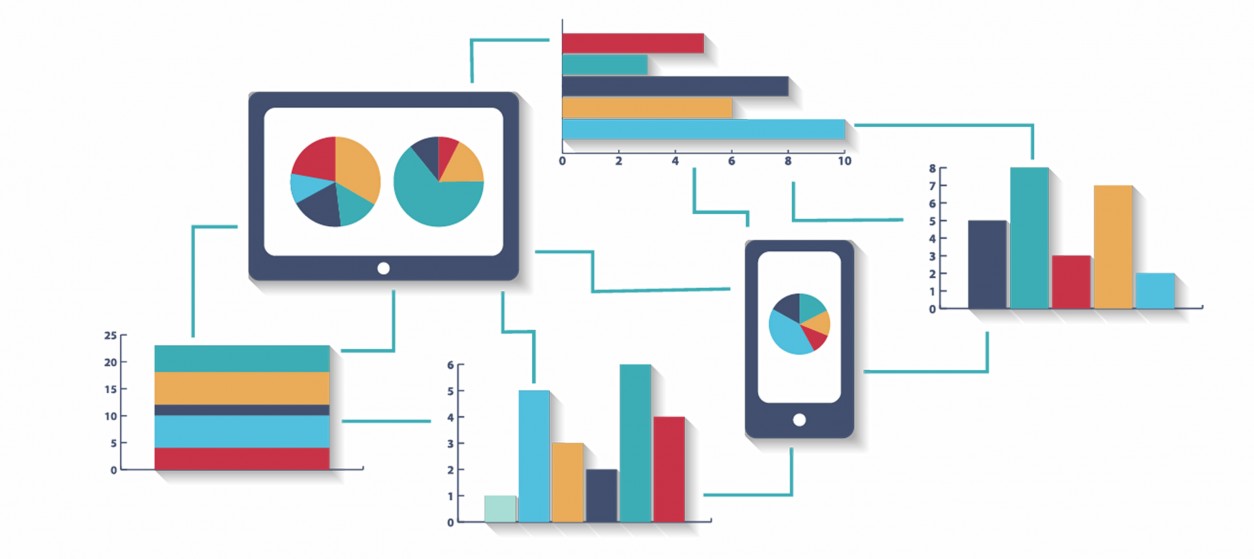At the dawn of the fourth industrial revolution, data is considered one of the most valuable assets of modern enterprises. Companies are increasingly becoming data driven, both in their business operations and in their managerial decision making. Nevertheless, data alone cannot boost optimal operations and effective decisions. Rather, it’s the processing of the data and its conversion into useful and actionable information that drive data driven business transformation and optimization. This is where Business Intelligence (BI) comes into play: BI refers to the business strategy and technological tools used for analyzing business information, including analysis of historical data, analysis of current data, as well as future predictions. Hence, BI is a business discipline, much as it is also a technology discipline. As part of the technological part of BI, companies use various databases and data analytics tools, which comprise their enterprise BI infrastructure. BI tools have been around for decades. However, in recent years, the advent of Big Data and Artificial Intelligence technologies have increased the number and broadened the functionalities of BI technologies.
Data Management Foundations
Data management is a key prerequisite for the deployment and operation of BI tools. Business Intelligence relies in the collection, consolidation and analysis of large volumes of data, which are typically stored and managed in different types of databases. A relational (SQL) database in the most basic and widespread data management infrastructure, yet it is not sufficient for BI analytics and applications. In most cases BI analytics operate over historical data, which are kept within Data Warehousing systems. The latter keep track ?f the full history of data entities, which is a foundation for data mining processes such as trends analysis, discovery of associations between business entities and predictive analytics. Data warehouses consolidate data from many different sources and operational databases, including data sources external to an organization. For example, a customer data warehouse consolidates data from many different sources of customer information such as e-banking systems, wealth management systems and more. The process of populating a data warehouse from some other data source, involves conversion of data between different structures and formats and is commonly known as ETL (Extract Transform Load).
Databases and data warehouses are two of the main pillars of any enterprise data management infrastructure. They are extremely effective in handling structured data and as such enable high quality and sophisticated reporting capabilities. Nevertheless, in the Big Data era, enterprises are offered with opportunities of handling large amounts of structured and semi-structured data, such as data from sensors, connected devices and social media. Such unstructured and semi-structured data are usually stored in the so-called noSQL databases, which provide better scalability for large amounts of unstructured data, yet they offer looser consistency in their transactions. Furthermore, in the era of Big Data organizations are also deploying data lakes, which persist and manage large amounts of data stored in raw format, such as object blobs or files. Nowadays, an organization’s enterprise management infrastructure consists not only of data warehouses, but also of data lakes as well.
Taxonomy of BI Tools
BI tools are deployed on top of the enterprise data management infrastructure. From a functional perspective, they can be categorized as follows:
- Querying and Reporting Tools: These are tools that extract, visualize and present data in various forms, such as charts, tables, pies, animations and more. Reporting is one of the most essential functions of business analytics. Modern reporting tools provide advanced interactivity, sophisticated user experience (e.g., augmented reality and virtual reality), as well as capabilities for visualizing very large datasets (i.e. BigData).
- Advanced Data Mining Tools: These tools are used to extract knowledge from information residing in data warehouses and data lakes. Typical data mining tasks include discovery of associations, extraction of rules, as well as predictions and forecasts. Furthermore, they provide auxiliary functionalities needed as part of the data mining process, such as data preparation, data preprocessing and evaluation of alternative data analytics models. Modern data mining tools provide also the means for advanced analytics (e.g., deep learning), which are typically embodied within AI applications like robots and autonomous guided vehicles.
- Content Analysis Tools: Content Analysis Tools facilitate the development of usable content inventories, which they accordingly leverage in knowledge extraction and visualization. Modern content analysis may also involve the extraction of knowledge from unstructured data sources such as raw text and multimedia, based on text analytics, speech analytics, image analysis and natural language processing technologies.
- Spatial Information and Geolocation Analytics: Some BI applications (e.g., route planning systems, geographical information systems, security & surveillance systems) hinge on the analysis of spatial and location. To this end, there are special tools providing the means for executing and mapping spatial queries, while carrying out relevant business analysis.
- Business Intelligence Scorecards: These are specialized tools that visualize the evolution of business entities over time, as means of enabling business performance management and boosting decisions that optimize enterprise performance. A scorecard can therefore display information about an employee, a team, a department, a supplier a business unit or even the enterprise as a whole. Moreover, these tools may display and track quantitative targets and Key Performance Indicators (KPIs) associated with the entity monitored or audited. In several cases, BI scorecards, are conveniently term “Performance Scorecards”, especially when they focus on managing entities for optimized business performance.
- Continuous Analytics: These tools provide functionalities for real-time processing of business information. As such they can deal with streaming data i.e. data streams that feature high ingestion rates, such as data from real-time stock exchange transactions, Twitter feeds or even data from moving vehicles or other forms of internet connected objects.
- Customer Relationship Management Analytics: Customer Relationship Management (CRM) is one of the most widespread enterprise business functions. CRM analytics refer to that class of BI applications that support decision making and analytics functions for customer related business processes. They are based on the collection and consolidation of data from different customer related systems, including sales, marketing, contact centers and customer support systems. CRM analytics boost decision support regarding customer facing processing, while at the same time automating CRM applications throughout the entire life cycle of a customer.
The above list of BI tools comprises utilities that are general purpose and sector agnostic. However, there is a host of sector specific tools such as tools for the business analysis of production planning and supply chain interactions, or even tools for gaming analytics and learning analytics. The field of Business Intelligent is growing rapidly and enterprises are provided with unprecedented opportunities for implementing data-driven business strategies and for improving their business performance. It’s therefore important to understand the BI infrastructures and tools landscape, in order to select the right tools and take proper decisions as part of your BI strategy.











I know this web site presents quality dependent articles and extra
stuff, is there any other web site which provides these data in quality?
Here is my web-site: παρακολουθηση κινητου
It’s actually a great and useful piece of information. I am happy that you shared this helpful
info with us. Please stay us up to date like this.
Thank you for sharing.
Also visit my blog post: ΕΞΩΔΙΚΑΣΤΙΚΟΣ ΣΥΜΒΙΒΑΣΜΟΣ